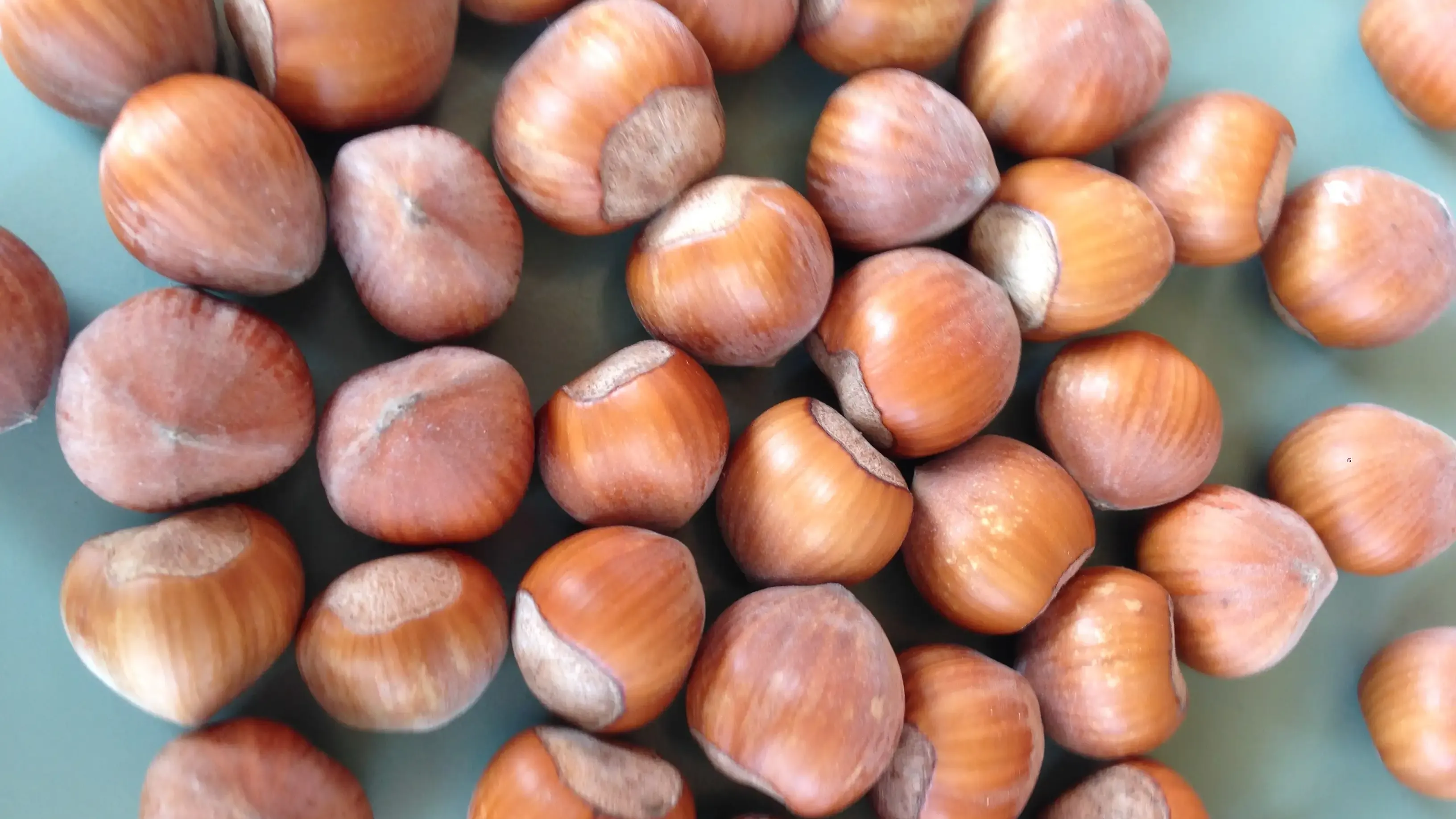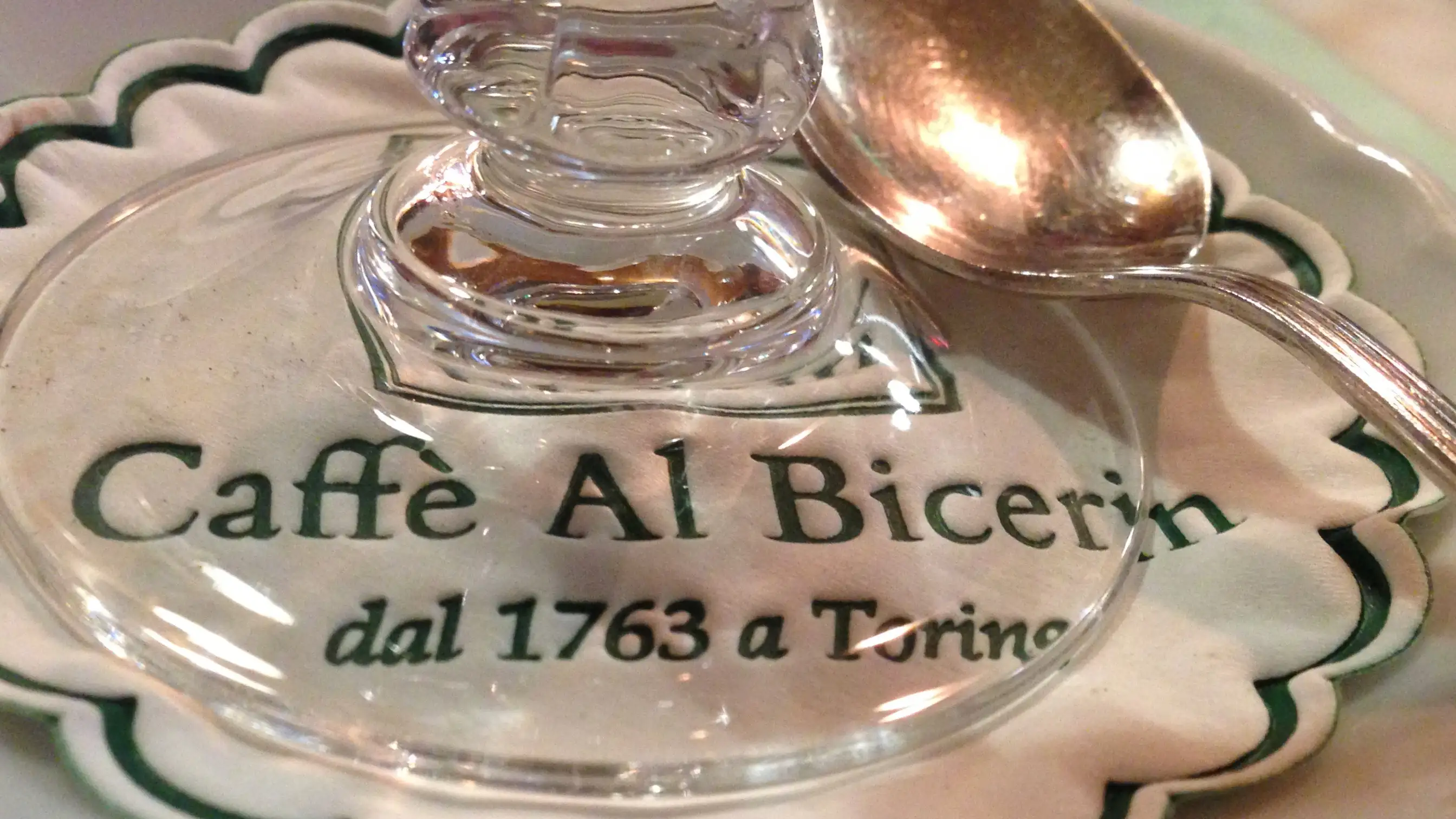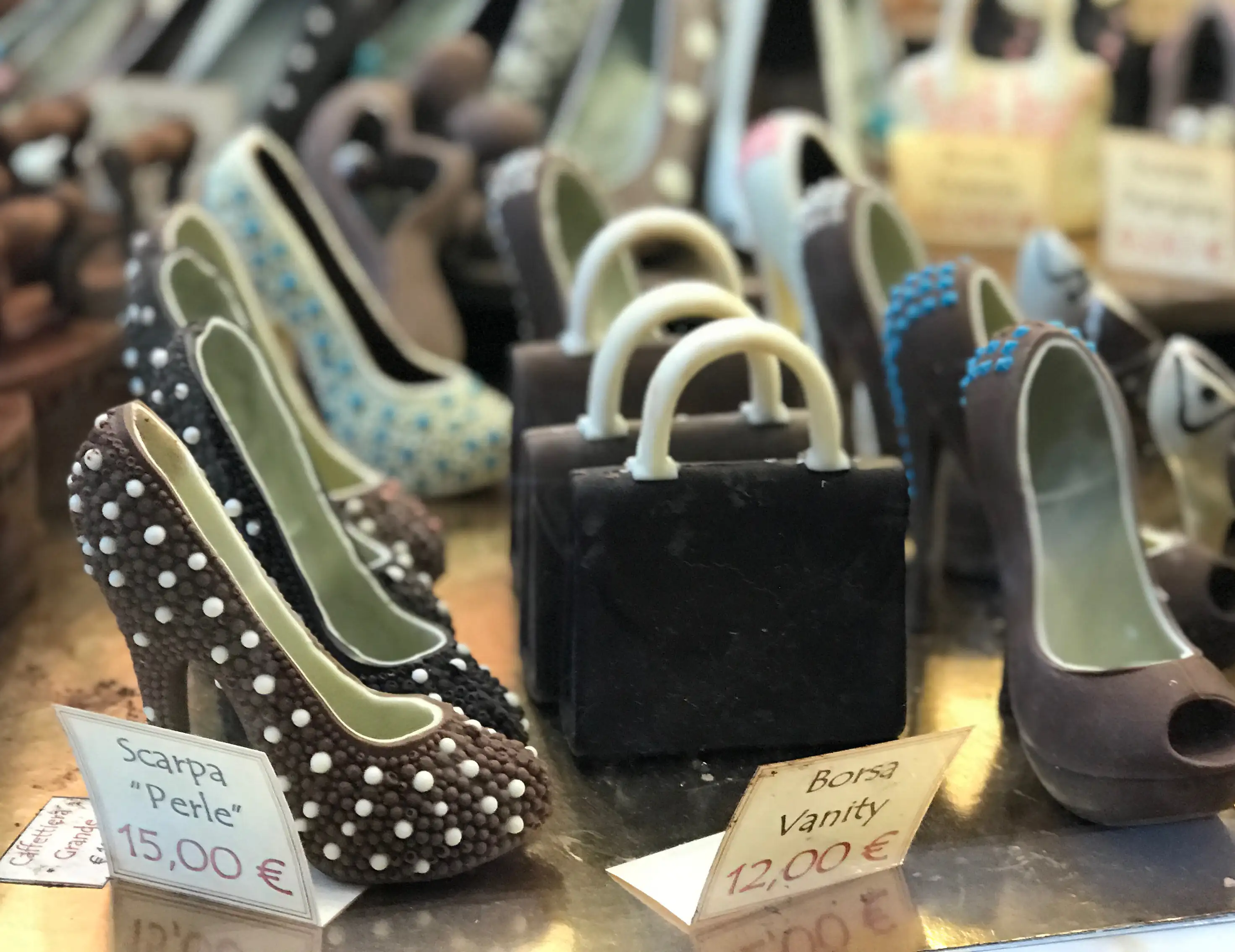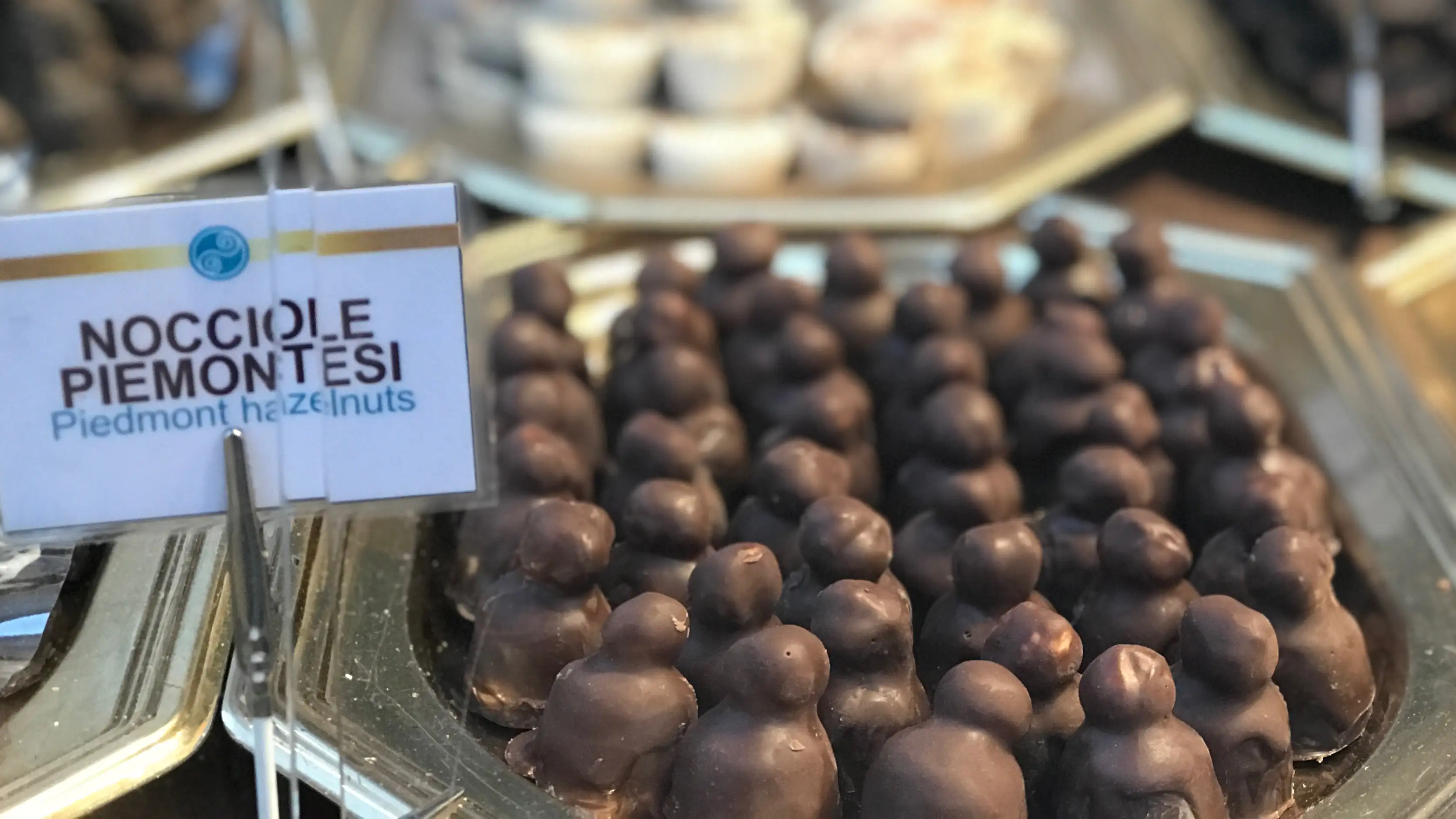Italian chocolate

In this article, I will shed light on the history of chocolate from an Italian perspective, and perhaps you will learn something about chocolate that you didn't know before.
Exquisite chocolate originating from Turin
When you taste gianduiotti for the first time you feel as if the sky is about to fall on you. Your tastebuds will literally go crazy and you will not just eat one… you will want more!
Gianduiotti are an amazing velvety and tasty type of chocolate - but how is this possible?
A city with early extravagant habits
Back in the 18th century Turin was already a large city by European standards. What we today call continental habits were found here, in Turn, very early on.
Piedmont's capital and nobility were located in Turin. They had refined habits, wealth, style and huge castles both inside and outside the city.
Long before Milan, the city of Turin was Italy's leading fashion capital, as a result of the royal house of Savoy commissioning very stylish outfits.
A lavish nightlife culture
New cafes and restaurants were popping up and opening all around Turin and this meant that gourmets, chocolatiers and others who lived for the pleasures of the palate flocked to the city.
In many ways, Turin became a European center for enjoyment of life, and you got what we today describe as a vibrant nightlife culture.
The kings and princes from the Savoy family who established themselves in Piedmont around 1024-1025 eventually had connections all over the world and they often received visitors from outside.
Their way of satisfying their guests - was to satisfy their palates by cooking amazing meals.
Examples of products and dishes that have come out of the royal house of Savoy are the breadsticks Grissini, which you can read about here, and the cookie Savoiardi (used in Tiramisù), which you can find the recipe for here.
The history of chocolate in Turin
As early as 1678, several licenses were granted in Turin to produce chocolate.
Many years before, already in 1559, Emanuele Filiberto, a duke of the royal house of Savoy in Turin - was the first known person to introduce chocolate to Italy.
The duke had received the goods from the King of Spain when he was visiting the Spaniards, for at that time the Spaniards were the only Europeans who imported cocoa beans.
Turin as a city and Piedmont as a surrounding country have therefore had a leading role in the history of chocolate in Europe, as well as in Italy - already from the 1560s onwards.
Hot chocolate in liquid form became common around Turin as early as the 17th century and it still is quite popular these days.
Cocoa becomes a scarce commodity
The continental system that Napoleon Bonaparte introduced in 1806 meant that British ships could not reach the central ports of Europe.
Therefore, among other things, cocoa beans, which the British imported in large quantities at this time, became a scarce commodity until well into the 19th century.
The French general held an iron fist over all of Europe between 1796 and 1814 and Turin was also under French control. Here the French beheaded as many as 423 people in the years between 1800-1814 in a square called Piazza Carlina.
Gianduja is born
In 1819, a master chocolatier of Swiss origin, Giacomo Martino Bianchini, invented a machine that revolutionized the way of producing chocolate, and received from the king an exclusive use of this machine for ten years.
The machine, which moves thanks to hydraulic power, is able to grind, clean, boil and select the cocoa, mix it with sugar and spices, to finally produce the finished product. According to the inventor, the mechanism is able to work with the help of a single operator and thus significantly reducing the production time of the chocolate, and with it also the production costs.
The following year, Bianchini rented the Watzembourn tannery for nine years and installed his machine there: thus the first chocolate factory in Turin was born. This was a huge change since in the past, the chocolate was produced exclusively by hand, in small shops.
The company takes the name "Landò chocolate factory" (from the nickname of the Watzembourn family, tenant of the building). Bianchini also owns some sales points in Via Santa Teresa 7 and 8 and in Contrada Dora Grossa 33 in Turin.
Bianchini's machine received many official recognitions, but unfortunately the inventor died prematurely in 1837.
Pierre Paul Caffarel - takes over the business - due to its undeserved mechanism. According to Caffarel, the invention brought Bianchini far from the desired profit, due to the high costs of operation and repair. He also buys a water-powered machine in Genoa, invented by a man named Bozzelli, and this revolutionary machine had the capacity to produce more than 300 kilos of chocolate per day.
Despite very high fees, Caffarel buys the tannery in order to be able to use the water from the river Po for its chocolate production.
The great demand in Turin gives him the courage to take a chance, and he changes the company name to Caffarel & sons. They were the only ones with a mechanical production right up until 1851.
A chocolatier named Michele Prochet eventually became Caffarel's business partner, and they later changed the company’s name to Caffarel Prochet & co. Prochet is one of Turin's most prominent chocolatiers at this time.
The year is 1865 and cocoa is in great short supply. They are simply unable to meet the huge demand!
That's when the clever chocolatier Prochet gets the brilliant idea of sprucing up the cocoa mass with hazelnuts from the area in Piedmont called “Le Langhe”.

Thus, Gianduja was born, a softer chocolate that contains 30% hazelnuts. Chocolate is eventually called Gianduiotto, named after a real Piedmontese, dressed in typical carnival costume.
Varieties of chocolate from Turin
I have mentioned how good it is…. But let me just stress it one more time! For the quality-conscious chocolate lover, giandiuotti is a must, and when you go to a café in Turin, you often get a small gianduiotto with your coffee. Then you know for sure that you are a welcome guest!
But of course Gianduiotto is not the only type of chocolate made in Turin…
Some other good chocolates
- Pralines with cherries in alcohol that we often just call boeri. There is a debate with Switzerland, apparently these chocolates were born there but they are very famous also in Piedmont.
- Cremini, a magical three-layer chocolate in which gianduia is separated from a hazelnut, coffee or lemon chocolate mass. These sweet delicacies were invented by Baratti & Milano. You can now find these cremini chocolates in almost every high quality cafè in Italy.
- Cri cri – a round chocolate with a hazelnut inside, covered with small sugar balls on the outside.
The charming story behind Cri-Cri

The round confection in colored paper, coated with chocolate and decorated with mom pariglia (tiny white sugar balls), is today called cri-cri, and there is a sweet reason for that.
The legend tells of a young girl named Cristina who lived in Turin at the end of the 19th century, and who made a living sewing beautiful dresses for the ladies of the royal house of Savoy. Cristina had a lover, they were very much in love, he was a student from Turin who called her by short "Cri".
When the two were on a date, the boy first went to a local cake shop where he bought these delicious sugar-coated chocolates.
The confectioner who knew them both and watched their love blossom knew what the student used to call her fiancé, so every time the boy went to buy the chocolates she would ask, "Cri?" and he answered back with a happy, "Cri!"
The owner of the patisserie witnessed this scene several times, and in honor of the two lovers, she decided to rename the sweet chocolates "cri-cri" .
The difference between hot chocolate and Bicerin
Up until now we have been talking about chocolate, but as we have mentioned, Turin is also known for hot chocolate and other cocoa-based drinks.
Between the seventeenth and eighteenth centuries, hot chocolate was so highly valued by the royal house of Savoy that it was served as part of the Merenda Reale (royal snack), a ritual consisting of pastries and other delicacies. Merenda served to quell the nobility's hunger between lunch and dinner.
Today, this custom can be found in many historic cafès.
For example, you can order your Merenda Reale in Turin with different types of pastries at Gelateria Pepino - and you should also try their Pepino ice cream, which comes in a number of different flavors.
This ice cream is covered in chocolate and was invented in 1939.
If you remove the word "reale" - royal - you are left with only merenda, which we can translate as snack.
Children, and sometimes adults, like to have a small "merenda" in the long gap between lunch and a late dinner - and it is usually something sweet eaten at around 4.30pm.
Bicerin
In addition to hot chocolate, another drink appeared in the second half of the eighteenth century: Bicerin. The ingredients are coffee, chocolate and milk foam. Once upon a time each element was served separately, but since the 19th century it became common to serve them all in the same glass.
The invention of this drink, which we can consider a true symbol of Turin’s gastronomy, is due to the historic Caffè al Bicerin which still today keeps the original recipe a secret.

This caffetteria is located in Piazza Della Consolata, where you also can find the beautiful church called Santuario della Consolata

We also know that a man called Camillo Benso di Cavour, the architect behind the united Italy that happened 17 March 1861, used to sit here.

Maybe he drank his Bicerin and ate some cookies?
When in Turin, you might want to taste hot chocolate. It’s thick and hot and it’s a very tasty chocolate. You might also want to add whipped cream to your order to get that extra sweet touch.

This is one of the most elegant historical cefftterie in Turin. The name Baretti & Milano has nothing to do with the city of Milan, the two gentlemen who opened the cafè both came from a small town close to Turin.
Visit the chocolate festival in Turin
CioccolaTò is an unavoidable meeting for all chocolate lovers.

Various events, but also workshops and demonstrations follow each other during the days of the festival. It is held from the end of October to the first weekend of November each year. It really is an experience to make your way through the streets and see all the stands with the different varieties of chocolate that you can taste from all the producers.

So now you know where to go - if you are a real chocolate lover.


